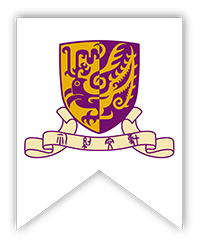- Upcoming Events
- Awards
- Distinguished Lecture
- Latest Seminars and Events
- Others
- Seminars
- Workshop and Conference
- Past Events
- Student Issue
| Topic: | Sparse Kronecker product decomposition: a general framework of signal region detection in image regression |
| Date: | 07/11/2023 |
| Time: | 10:00 am - 11:00 am |
| Venue: | Fung King Hey Building Swire Hall 1 |
| Category: | Latest Seminars and Events |
| Speaker: | Professor Long Feng |
| PDF: | Prof.-Long-Feng_7-NOV.pdf |
| Details: | Abstract This paper aims to present the first Frequentist framework on signal region detection in high-resolution and high-order image regression problems. Image data and scalar-on-image regression have been intensively studied in recent years. However, most existing studies on such topics focused on outcome prediction, while the research on image region detection is rather limited, even though the latter is often more important. In this paper, we develop a general framework named Sparse Kronecker Product Decomposition (SKPD) to tackle this issue. The SKPD framework is general in the sense that it works for both matrices (e.g., 2D grayscale images) and (high-order) tensors (e.g., 2D colored images, brain MRI/fMRI data) represented image data. Moreover, unlike many Bayesian approaches, our framework is computationally scalable for high-resolution image problems. Specifically, our framework includes: 1) the one-term SKPD; 2) the multi-term SKPD; and 3) the nonlinear SKPD. We propose nonconvex optimization problems to estimate the one-term and multi-term SKPD and develop path-following algorithms for the nonconvex optimization. Under a Restricted Isometric Property (RIP), the computed solutions of the path-following algorithm are guaranteed to converge to the truth with a particularly chosen initialization even though the optimization is nonconvex. Moreover, the region detection consistency could also be guaranteed by the one-term and multi-term SKPDs. The nonlinear SKPD is highly connected to shallow convolutional neural networks (CNN), particularly to CNN with one convolutional layer and one fully-connected layer. Effectiveness of SKPD is validated by real brain imaging data in the UK Biobank database. |



